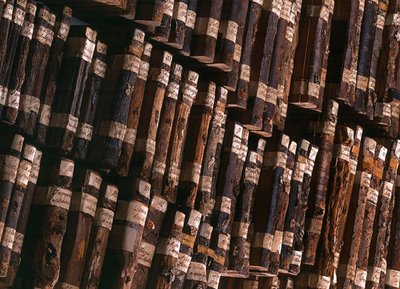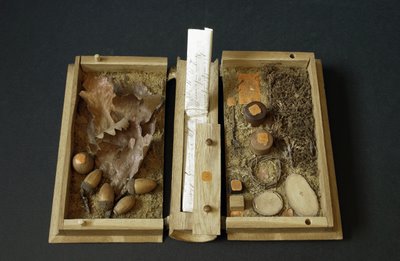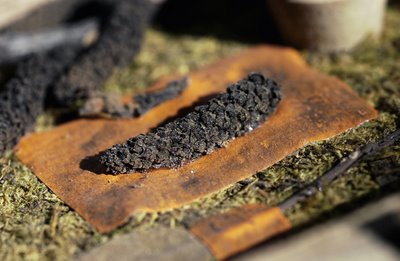The Wooden Library
Museum of Dust’s latest acquisition adds a whole new dimension to our collection. A wooden dimension technically called a xylothek – which is all Greek to me, but means… wooden library. “But”, I can hear you protest, “What do you think paper is made out of? All libraries are made of wood.” But a xylothek is LITERALLY a wooden library. A forest of information. It is made out of wood. It is about wood. It is wood.

Each volume in our Xylothek consists of a book with covers made from the tree that it is about. The spine is covered with its bark. Inside each book are leaves, bits of cut branches, samples of the roots, seeds and resin etc from the tree. If the tree is associated with particular lichens or funghi, there’ll be samples of them too. Many of them have samples of products derived from the tree too. Inside the spine there’s a description of the biology of the tree species and also a description of how to use it practically. Thin sheets of wood with paintings of perishable elements of the tree like fruit and flowers complete the entire ensemble.

Xylotheks particularly flourished in Germany around 1790-1810. Many were produced by obsessives and some by craftspeople to order. A market grew and four different manufacturers existed and three of them offered their products for sale. The Alnarp collection is an example. The collection was manufactured in Nürnberg, Germany during the first decade of the 19 th century by Friedrich Alexander von Schlümbach and Johann Goller. Nine different collections of their hand are known from Germany, Hungary, the Netherlands and Sweden (Alnarp). The Alnarp collection is by wide margin the largest known by the hands of Schlümbach/Goller and the only one with over 200 different species.
The Alnarp wooden library>>
The Observatory at Kremsmünster (also known as the Mathematical Tower) has a fine xylothek – I must remember to collect it too sometime in the future. >>

Update: BibliOdyssey has a very beautiful 'Wood Book' >>
"In the beginning Houttuyn intended that his 'Houtkunde' should be favoured by keepers of 'wunderkammer', but the title page from a later edition envisioned a wider audience - “‘Houtkunde’ represents inland and foreign wood, used to build houses and ships, as well as for cabinets, tools, paints and also for medicine”."

1 Comments:
You can always be counted upon to exhibit the most wonderful and curious things. How neat!
Post a Comment
<< Home